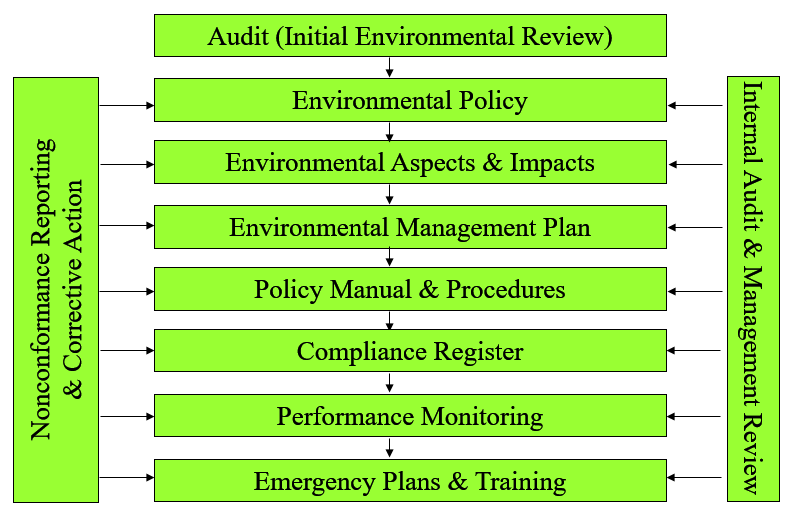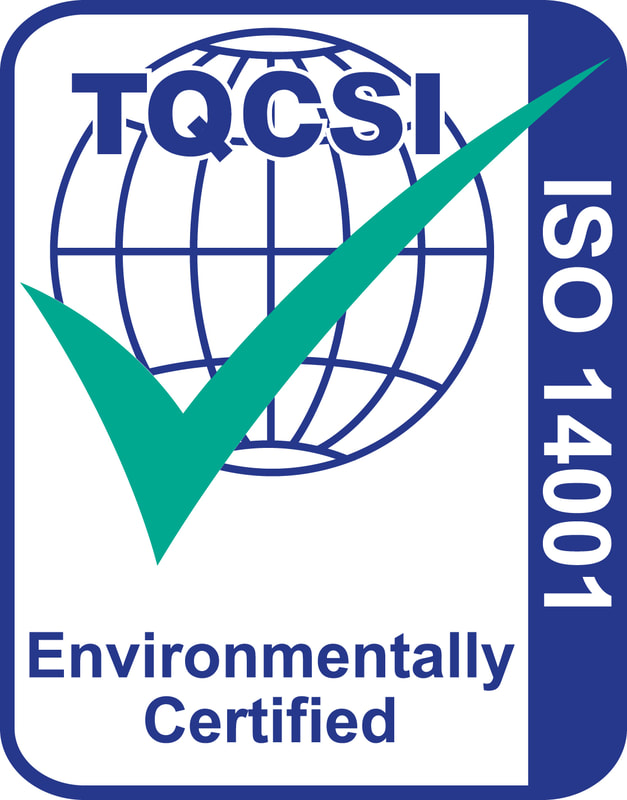ISO 14001 - Environmental Management System
ISO 14001 for Environmental Management Systems requires organisations to adopt a risk based approach to their management of the environment, with the aim of ensuring environmental sustainability and continually improving environmental performance, where possible. Based on the same Higher Level Structure that all ISO management system standards follow, ISO 14001 is not a prescriptive document, rather it specifies requirements to allow organisations to achieve intended outcomes they set for their environmental management system.
Environmental Management System Requirements
An Environmental Management System (EMS) requires organisations to:
- conduct an Initial Environmental Review (or equivalent) to identify the potential environmental aspects and impacts for the organisation’s premises, processes and products
- understand external & internal issues, and interested parties, relevant to the environment
- develop an Environmental Policy – typically one page document declaring commitment to environmental sustainability
- develop an Environmental Aspects & Impacts Register
- develop an Environmental or Management Manual – documenting as much or as little as you want but, typically, briefly addressing the clauses of ISO 14001
- develop procedures – only a few are required to address environmental monitoring, where required
- develop and monitor environmental objectives and targets
- embrace environmental risks and opportunities throughout the business
- ensure compliance with regulatory and customer requirements
- ensure staff are competent and understand the environmental management system
- monitor environmental performance
- plan responses to emergencies and mitigate environmental damage
- control environmental nonconformances and take corrective action for significant or repetitive nonconformances
- conduct internal audits of the environmental management system
- ensure senior management strategically review the environmental management system.
Documentation Requirements
- Initial Environmental Review (or equivalent audit)
- Environmental Policy
- Environmental Aspects & Impacts Register
- Environmental or Management Manual
- Procedures
- Environmental Management or Improvement Plan (monitoring environmental objectives and targets)
- Registers – for nonconformances and corrective action, and compliance
- Emergency Response Plan.
Implementing an Environmental Management System
Benefits of an Environmental Management System
- demonstrated due diligence by meeting regulatory and customer requirements
- meeting tender requirements
- improved reputation
- marketing advantage and enhanced company profile
- minimised risk and reduced environmental incidents
- more efficient use of resources and reduced waste
- lower costs leading to increased profits
- focussed and motivated workforce and empowerment of employees
- meeting Community expectations
- meeting altruistic and ethical obligations
- easily integrated with other management systems.
TQCSI Certification Process
- contact your TQCSI Office and ask for a quote or apply on-line - TQCSI will need to know what your business does and how many employees (full time equivalent)
- to prevent delays, don’t wait until your Environmental Management System is fully implemented.
Certification Mark
Need Help?
Contact us here.


